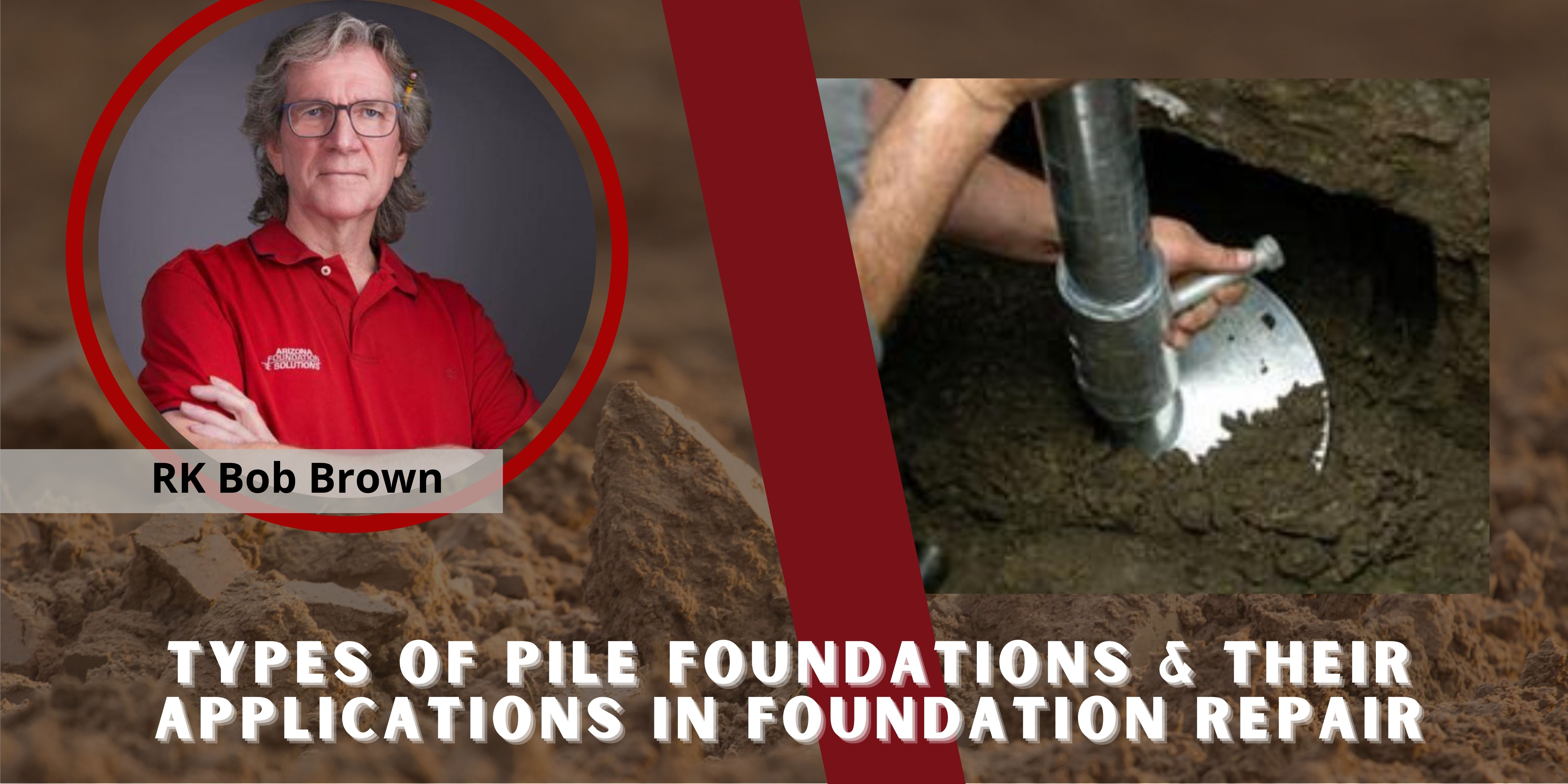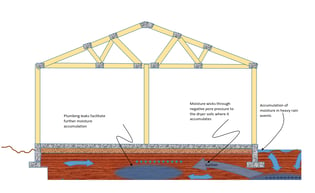Pile foundations are columns inserted into the ground that will transfer
weight loads to the deep soil beneath the structure.
In repairing lighter structures, there are typically there are 3 pile foundation repair types that are typically used:- Helical piles
- Push piles
- Micro piles
Compaction grouting can also be an alternative to piles in general. However, each foundation problem requires an individual Level B Foundation Investigation to determine if compaction grouting would be the ideal solution.
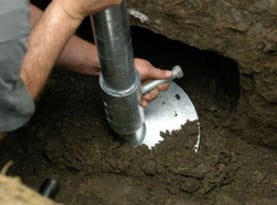 Pros of Helical Piers in Foundation Repair
Pros of Helical Piers in Foundation Repair
Helical piles have a helix plate (see drawing) that are screwed into the ground using a torque driver. The torque is monitored and is used to arrive at the installed capacity of an installed pile using a correlation coefficient. This provides superior install verification capacities over other pile types.
Helical piles are installed using a hydraulically powered torque driver that is usually mounted on an excavator or skid steer tractor. They can be hand installed but it is difficult and potentially dangerous. Since mini excavators and skid steers are smaller than drills for caissons or auger cast piles, helical piers can go into tight access areas easier than caissons, auger case piles or even micro piles.
Caissons are essentially large diameter holes that are drilled with large equipment that are filled with concrete and rebar. It is the standard of the industry for heavily loaded new construction commercial buildings.
Helical piles also have the advantage providing both tension and compression resistance. Sometimes, there are both tension and compression forces to resist. Wind loads and earthquakes can provide both tension and compression loads on a foundation element. Shear walls often need to resist both compression and tension loads.
Helical piles can be spaced no closer to each other than the diameter of the largest helix times 3.
Cons of Helical Piers in Foundation Repair
Helical piles are not effective with large rocks or cobbles. They stop on encountering these or other obstructions and cannot penetrate further into the ground, possibly leaving softer soils underneath that cannot be bypassed.
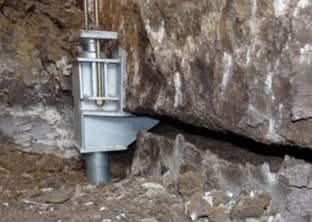 Pros of Push Piles in Foundation Repair
Pros of Push Piles in Foundation Repair
Push piles are driven down using hydraulic cylinders and use the weight of the structure as a reaction to push against. There is no percussion. It is a smooth, quiet driving process. The pressure used to power the hydraulic cylinders can be monitored and recorded and used to calculate the bearing capacity of the pile once it is installed. The installation of Push Piles is similar to the installation of Helical Piers.
Since it is smaller in diameter than a helical pier, the spacing of push piles can be closer. The smaller diameter of the push piles can penetrate stiffer soils, down to deeper strata. Push piles also get past cobbles and other obstructions below a structure’s foundation better than helical piers. Predrilling past obstructions (using down-in-the-hole hammer or other drills) is easier and cheaper with push piles than it is with helical piers.
Foundation Repair Fact: Push Piles are faster and usually more economical than Helical Piers.
Push Piles are installed without any excavators or tractors. This makes push piles more suitable for tight access areas - more than almost any type of pile including helical piers.
Cons of Push Piles in Foundation Repair
Push piles require a heavy structure to push against in order to act as a reaction to push the piles. Push piles cannot go into an area where no structure currently exists or areas with a very light weight.
Push piles have no tensile capacity. Push piles cannot be used to resist uploads from winds or earthquakes in sheer walls.
If cobbles or obstructions get too heavy, push piles will not penetrate them.
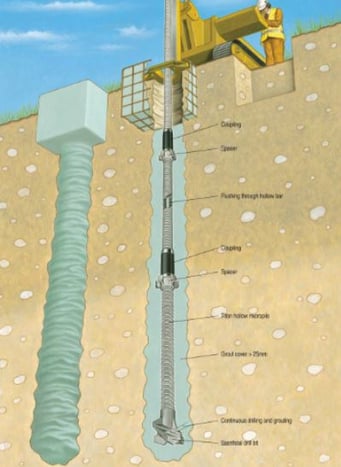 Pros of Micropiles in Foundation Repair
Pros of Micropiles in Foundation Repair
Micropiles are installed with percussion (hammering) while drilling (rotating a cutting drill head), while simultaneously injecting grout out the drill tip. The drilling bit can be engineered to drill through cobbles, rocks or other obstructions.
Micro piles can be used to resist tension or compression loads similar to helical piers.
Cons of Micropiles in Foundation Repair
Micro piles are typically more expensive than helical piers or push plies.
Micropiles require larger equipment to install than helical piers or push piles, but still smaller equipment than caissons or other larger commercial building systems
Micropiles have no self-install feedback mechanisms like helical piers or push piles to monitor their capacities. A percentage of the micropiles can be tested to make a reasonable assurance of the micropiles that are not tested.
Micropiles are typically a messy process requiring a lot of clean up.
The percussion on this system is at the top of the drill requiring the vibrations to hammer passing all the way to the bottom of the drill string. Thus the deeper it goes, the less effective it is in hammering. (as opposed to a down-in-the-hole hammer that has a hammer mechanism at the bottom of the drill string)
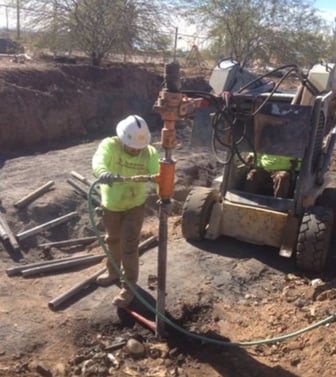 What is Compaction Grouting?
What is Compaction Grouting?
Compaction grouting is the injection of grout down into granular, loose soils to densify and stabilize sub surface voids.
Compaction grouting does not attach a physical element to a structure like a footing, but instead seeks to densify the soil below a footing making the footing do its original intended function.
It is done by hammering down a hollow casing (pipe) down to refusal, knocking the tip out and injecting stiff grout to displace and compact the soil around it.
Pros of Compaction Grouting in Foundation Repair
Compaction grouting does not usually require large equipment at the point of installation, making it good for tight access.
Since compaction grouting raises up all the soil above it, it is usually better for plumbing and other underground infrastructure. However, compaction grouting still has significant risks of injecting grout into any subsurface elements.
Compaction grouting is a good process for pavements and nonstructural elements, since it raises all the soil around it spreading the support over a larger area (opposed to a point load like piles do).
Cons of Compaction Grouting in Foundation Repair
The installation of casing may run into cobbles or obstructions like helical or push piles and may require predrilling.
As noted above, compaction grouting can damage underground infrastructure.
Compaction grouting is typically more expensive than helical piers or push piles.
Grouting is a messy process that requires a lot of clean up and the hoses are heavy and move violently during pumping that can damage things on the surface near the work areas.
Each of these foundation repair tools have pros and cons that suit themselves to for various job types and applications. The trick is using the ones that best work for each type of anticipated work…. and accurately predicting the soil conditions where the work will take place.
If you only have one tool, then it becomes difficult to try to cram round pegs into square holes!


